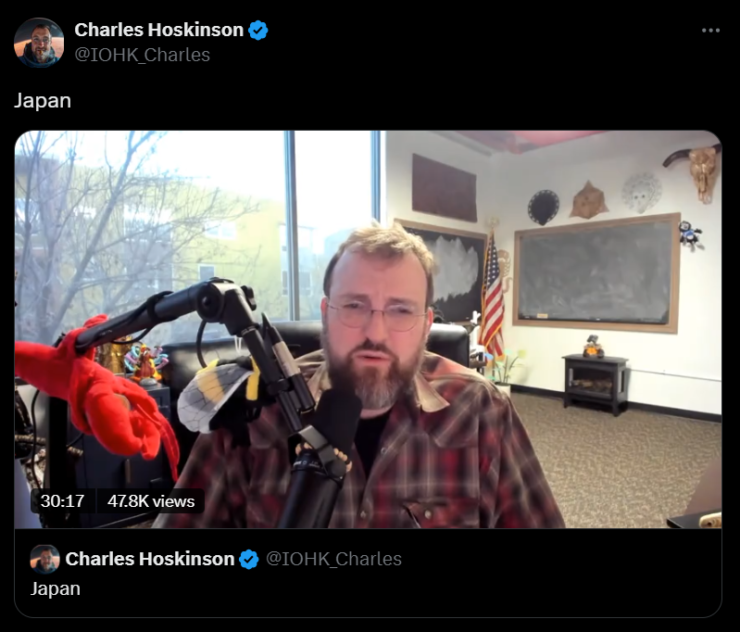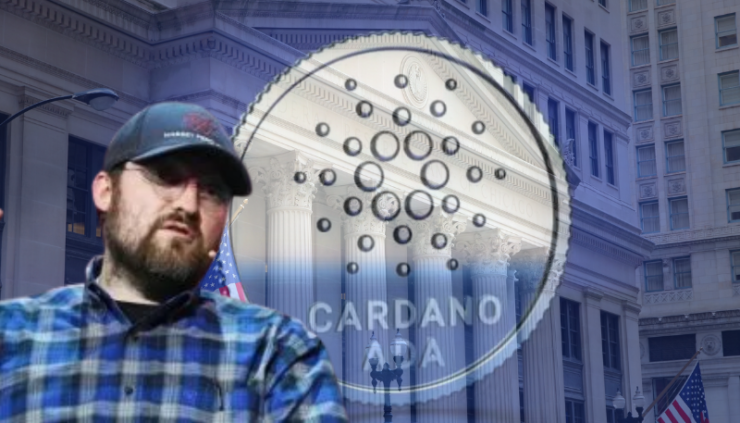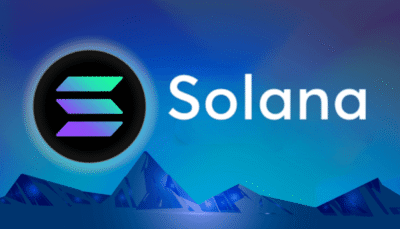Cardano founder Charles Hoskinson has denied having any prior knowledge that ADA would be included in the US Crypto Reserve, a move that has sparked speculation about the government’s strategy on digital assets. Hoskinson’s remarks have added to the debate on how policymakers are selecting assets for this high-profile initiative.
Speaking in a March 5 video, Hoskinson expressed shock and confusion over ADA’s selection, revealing that he only learned of the decision on the day it was announced.
“We knew nothing about ADA being selected for the reserve. It was news to me,” he said. “I woke up to 150 messages of congratulations but had no idea what the heck was going on.”

Hoskinson further explained that no one from the US government had reached out to discuss Cardano’s inclusion.
“We never even knew about it, and nobody even talked to us about it,” he stated, adding that his previous efforts to engage in such discussions were met with responses like “We’ll call you back” or “We’ll figure it out.”
Trump’s Surprise Crypto Reserve Announcement
On March 2, former US President Donald Trump revealed plans for a US Crypto Reserve, confirming that it would include Bitcoin (BTC) and Ethereum (ETH) but also naming XRP, Solana (SOL), and Cardano (ADA) a move that surprised many in the crypto industry.
ADA’s market reaction was swift and dramatic. The token skyrocketed 76% in just a few hours, jumping from $0.647 to a peak of $1.14, before dumping 30% the following day.
However, the reserve’s asset selection has sparked controversy, with some industry executives criticizing the inclusion of altcoins beyond Bitcoin. This has fueled speculation about what criteria were used to select these assets and whether the decision was based on political, financial, or technological factors.
Hoskinson Left Out of White House Crypto Summit
Adding to the intrigue, Hoskinson confirmed that he has not been invited to the White House crypto roundtable on March 7, where key figures will discuss digital asset policies.
“I’m going to operate under the assumption that I have not been invited to go to this gathering,” he remarked. “I don’t imagine much policy work will be done.”
While recognizing the importance of bringing crypto into policy discussions, Hoskinson criticized the hype around such events, arguing that real regulatory progress requires broader industry collaboration.
“It’s not helpful as an industry to treat all this as some sort of popularity contest,” he said. “If you believe for a moment that your cryptocurrency is going to do well because somebody went to a ‘vanity fair,’ you’re a fool.”
Crypto Policy Talks Gain Momentum
Meanwhile, the push for crypto regulation in Washington continues. On March 5, Senator Tom Emmer and Representative Bryan Steil hosted a “Crypto Power Lunch” to discuss digital asset policy initiatives and legislation. The meeting included representatives from major crypto firms and trade organizations, such as:
- Paradigm
- Andreessen Horowitz
- Coinbase
- Consensys
- Anchorage Digital
These discussions highlight growing institutional engagement in crypto regulation, even as uncertainty remains over the US government’s selection of specific assets for its strategic reserve.
What’s Next?
Hoskinson’s exclusion from key policy discussions raises broader questions about how blockchain leaders are engaging with regulators. With institutional and political forces shaping the future of digital assets, the industry is left wondering:
- What criteria were used to select ADA for the US Crypto Reserve?
- Will the reserve’s composition remain fixed, or will additional assets be considered?
- How will policy decisions made in Washington impact long-term adoption of blockchain technology?
For now, Cardano’s unexpected inclusion in the US Crypto Reserve remains a mystery, leaving both investors and industry leaders searching for answers in an evolving crypto policy landscape.





